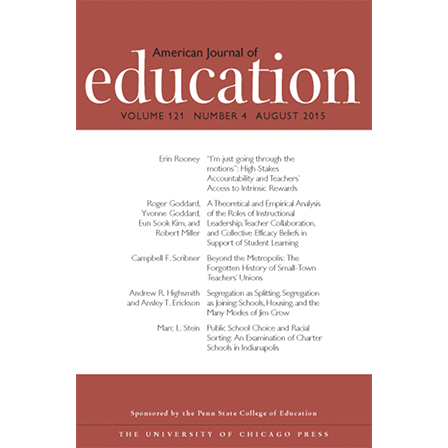"Popular understandings of segregation often emphasize the Jim Crow South before the 1954 Brown decision and, in many instances, explain continued segregation in schooling as the result of segregated housing patterns. The case of Flint, Michigan, complicates these views, at once illustrating the depth of governmental commitment to segregation in a northern community and showing how segregated schools and neighborhoods helped construct one another. The Flint case also reveals new modes of segregationist thought. Throughout much of the twentieth century, Flint’s city leaders thought of segregation as splitting, and they sought to divide their city along racial lines. But they thought of segregation as joining as well. Drawing on various strands of progressive reform and educational thought, Flint’s educational, business, and philanthropic leaders believed community bonds would be stronger in segregated neighborhoods anchored by their schools. Flint’s “community schools” program worked toward this end, exemplifying the paired embrace of segregation as joining and splitting, and becoming a model for educators in hundreds of cities nationwide."
Highsmith, Andrew R., and Ansley T. Erickson. "Segregation as Splitting, Segregation as Joining: Schools, Housing, and the Many Modes of Jim Crow." American Journal of Education, Vol 121, No 4 (August 2015): 563-95.





